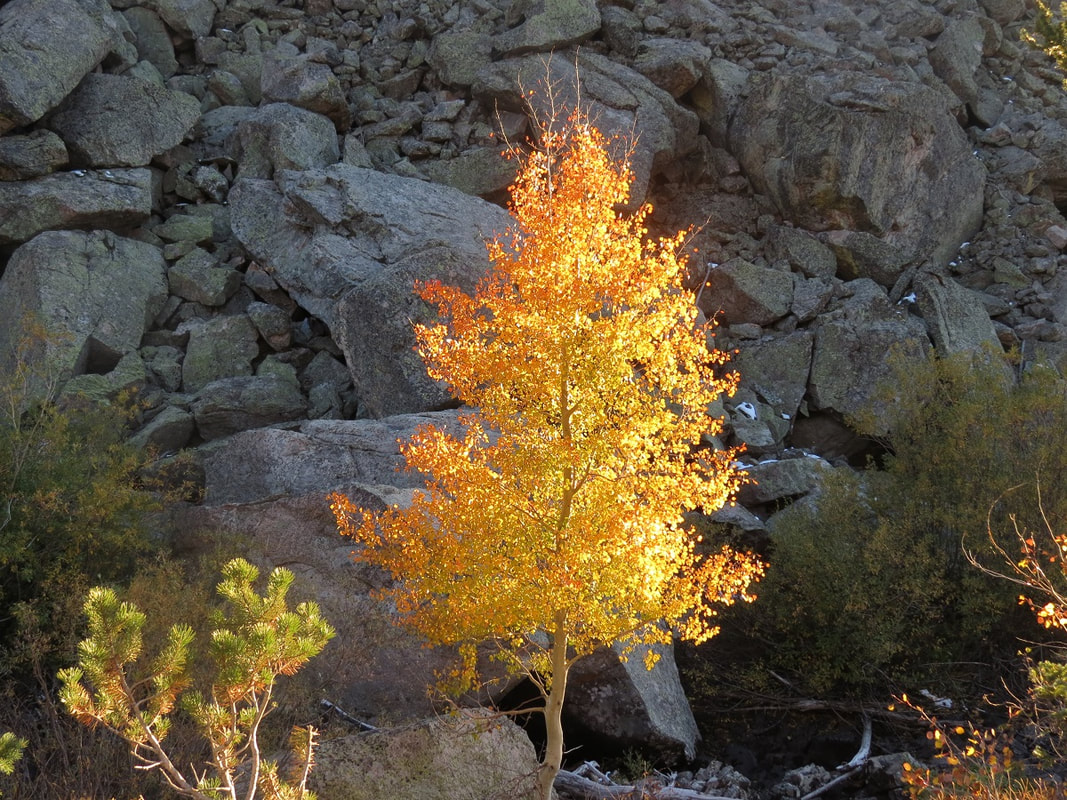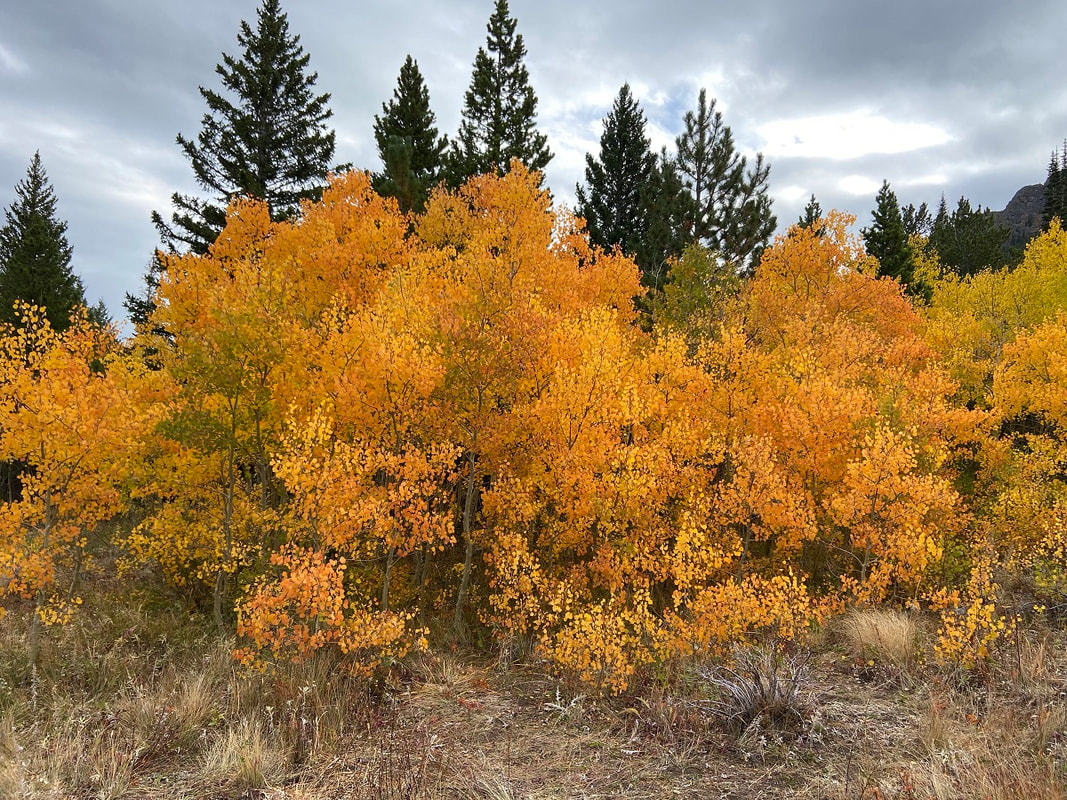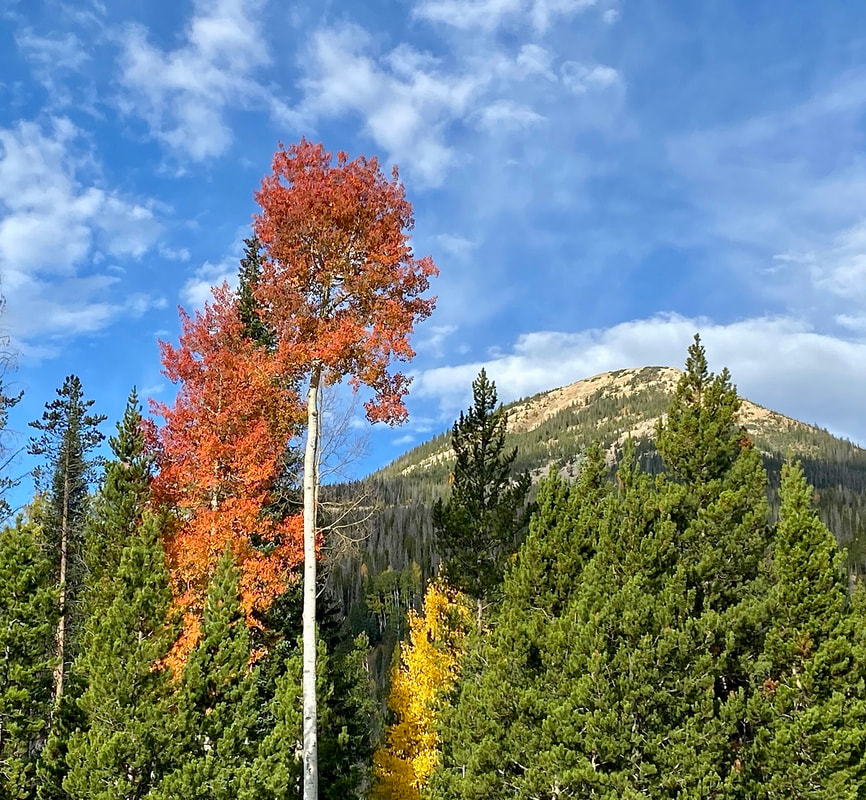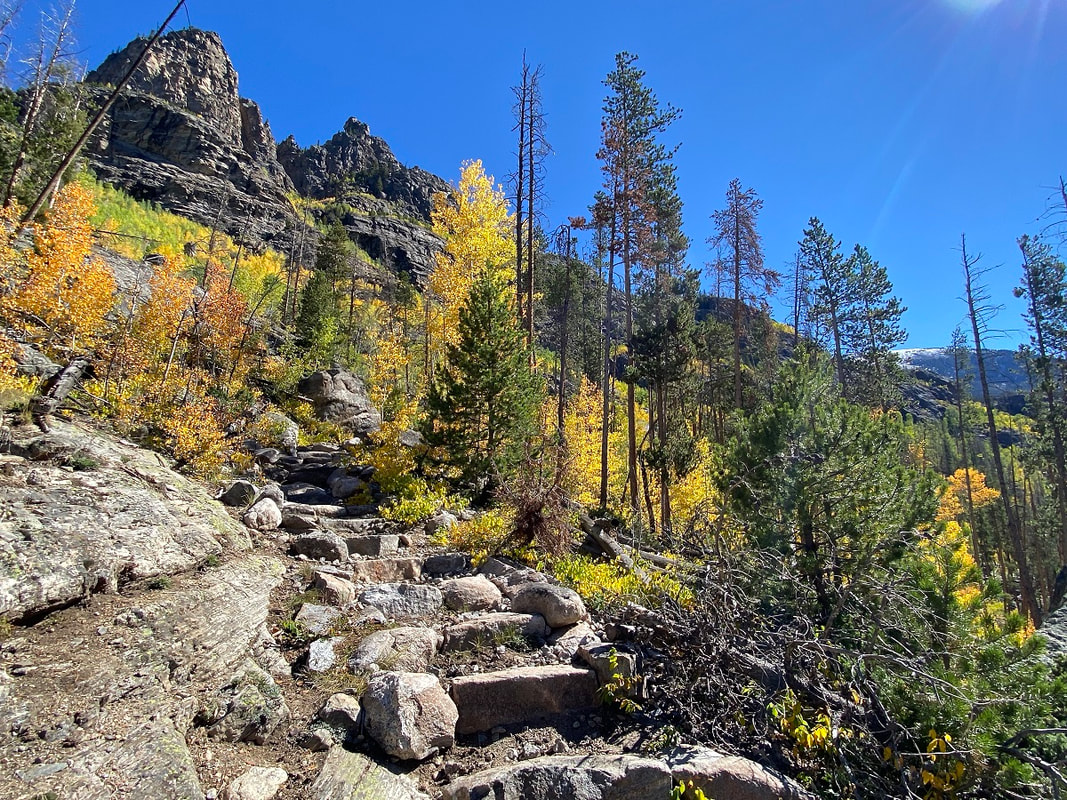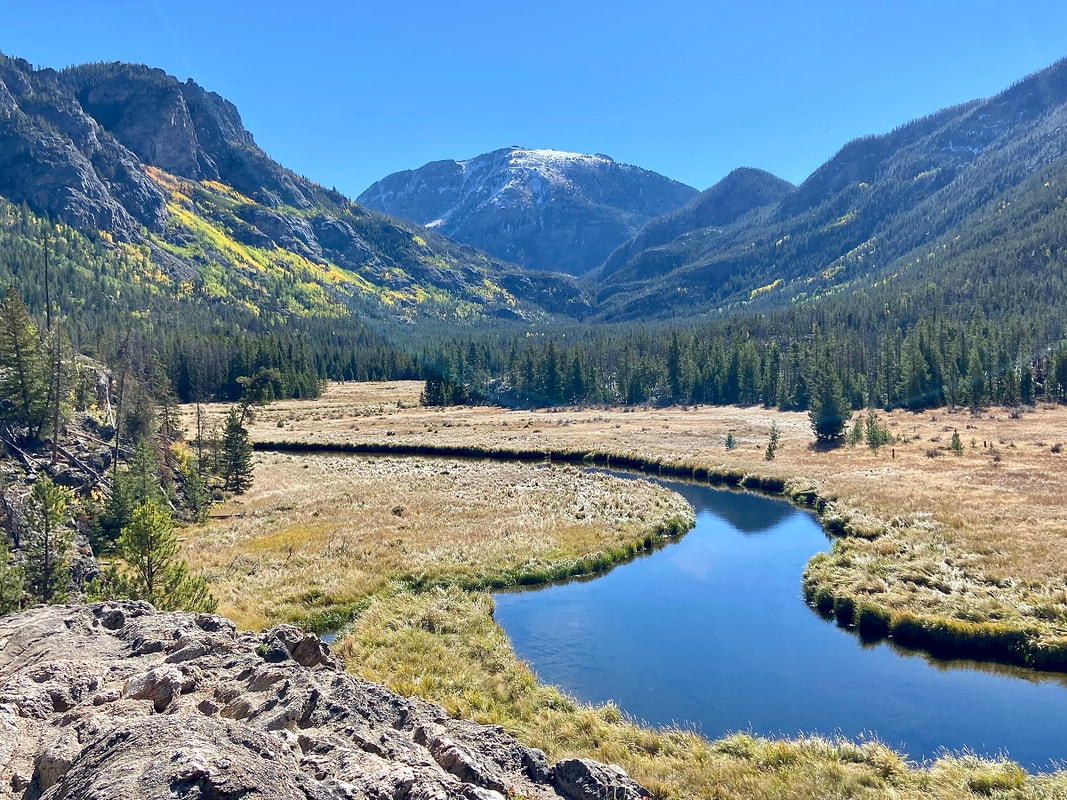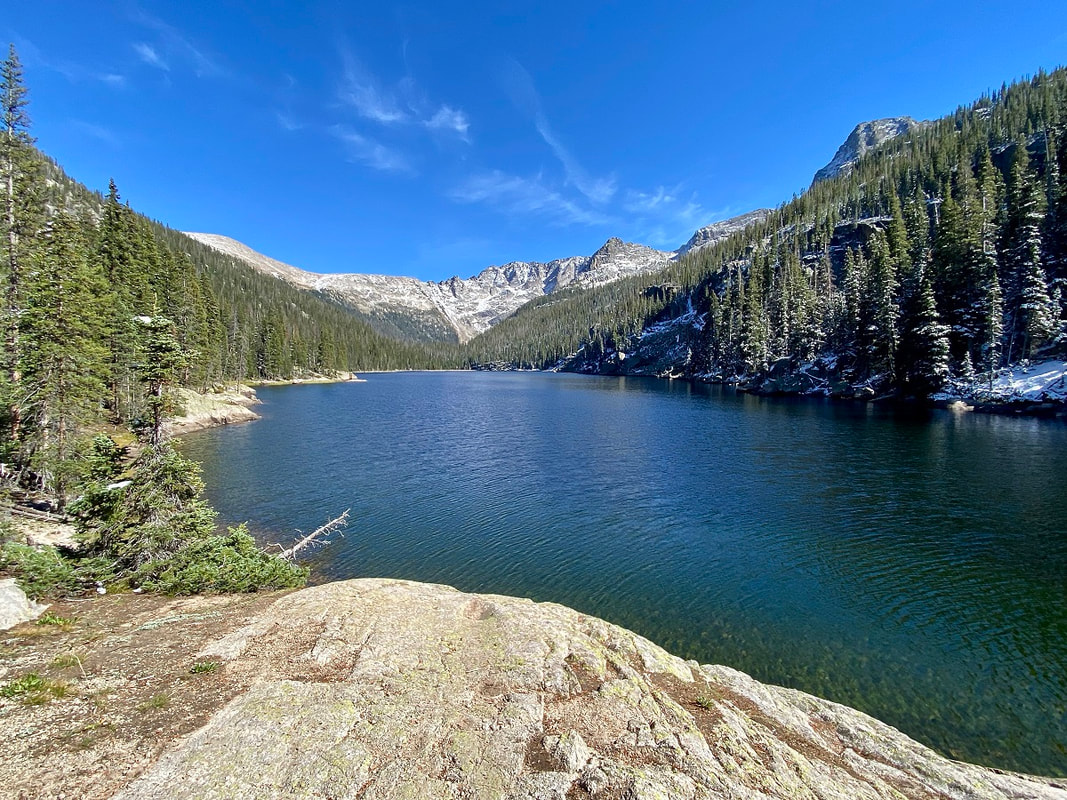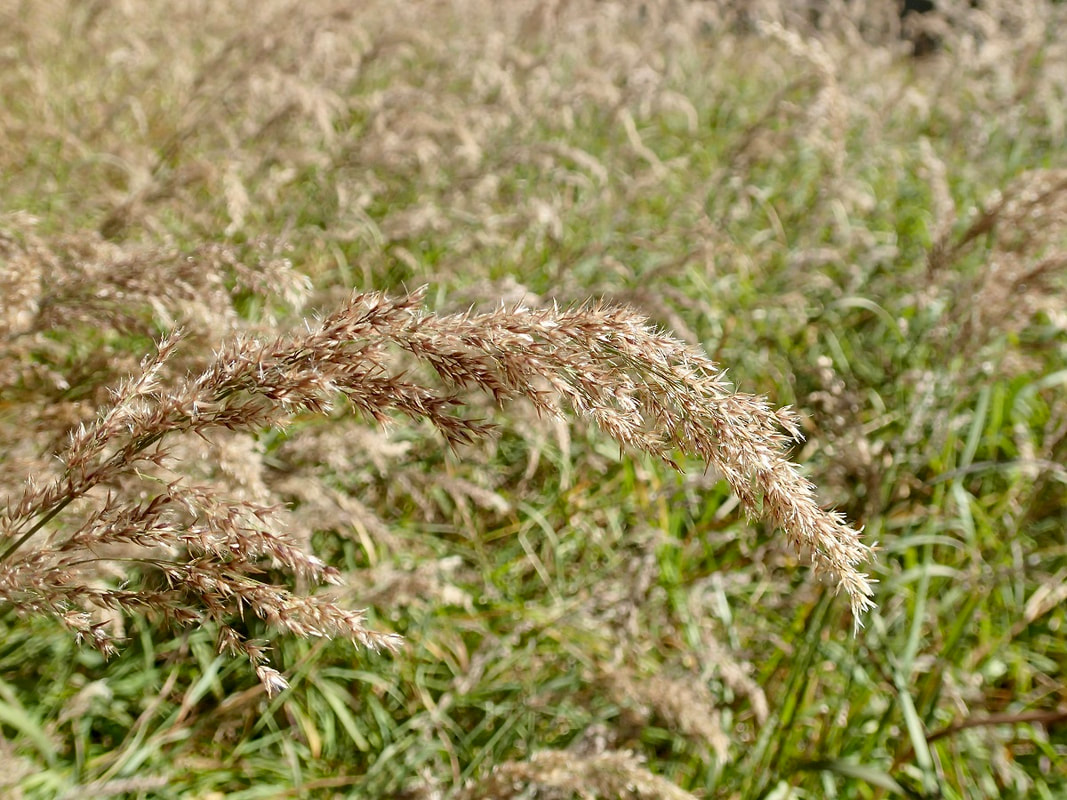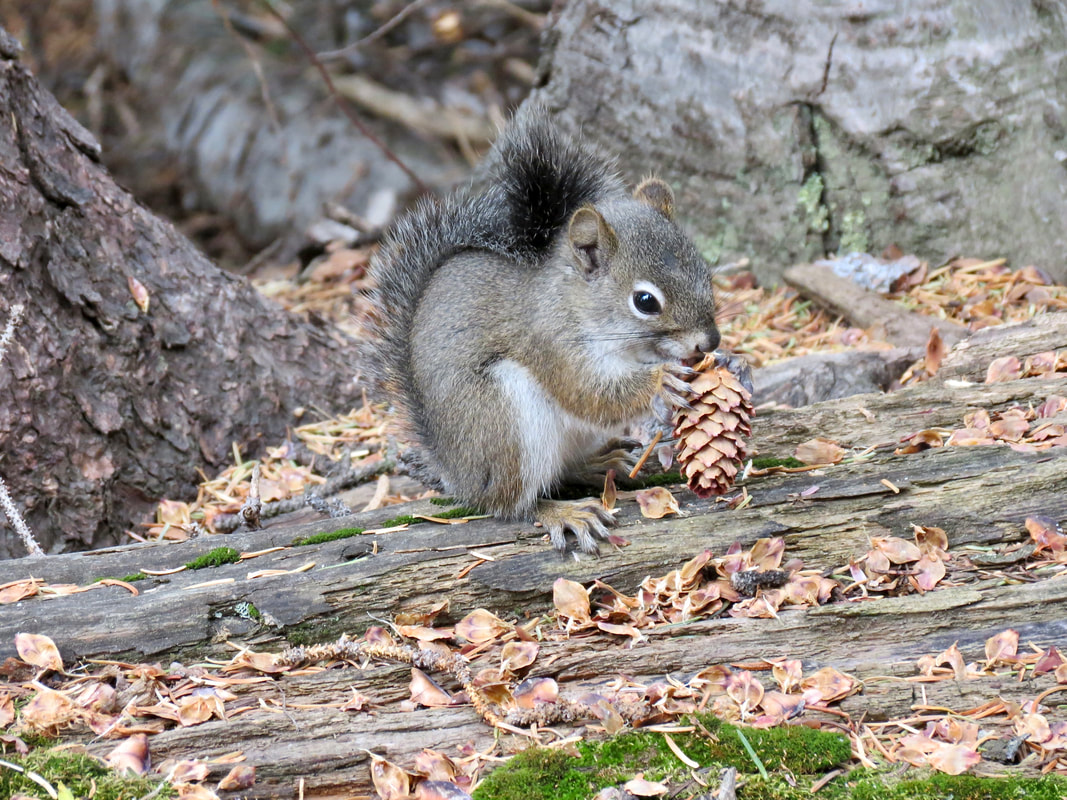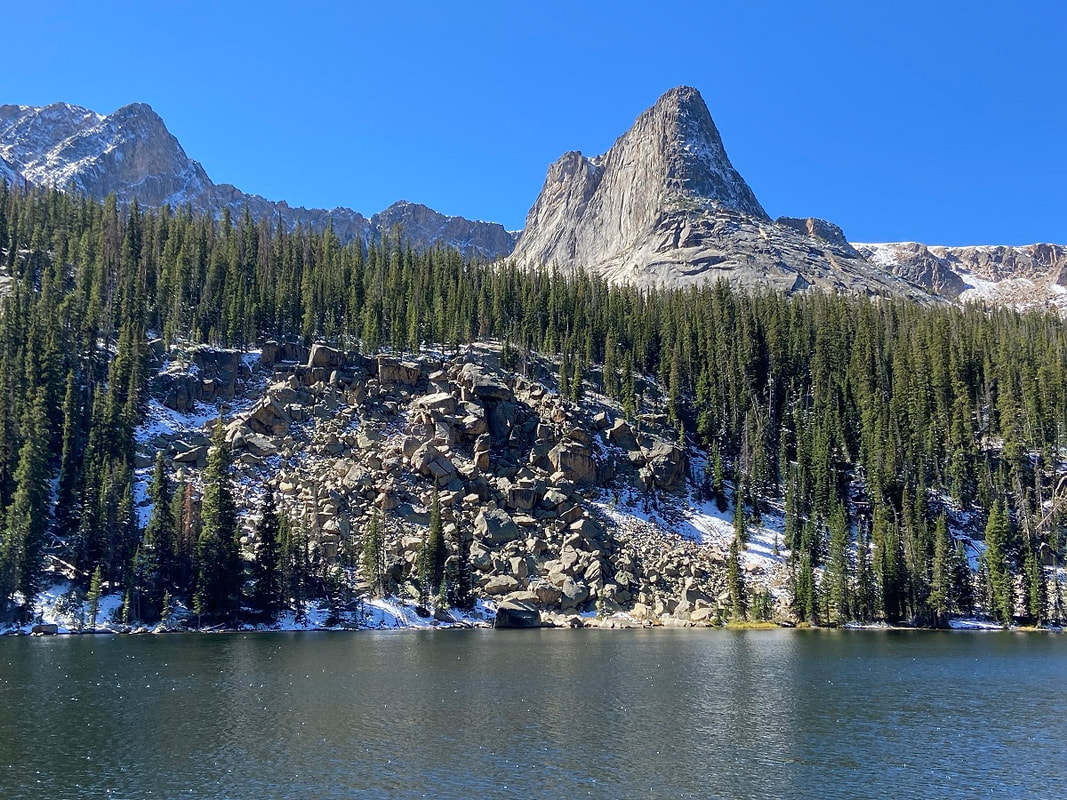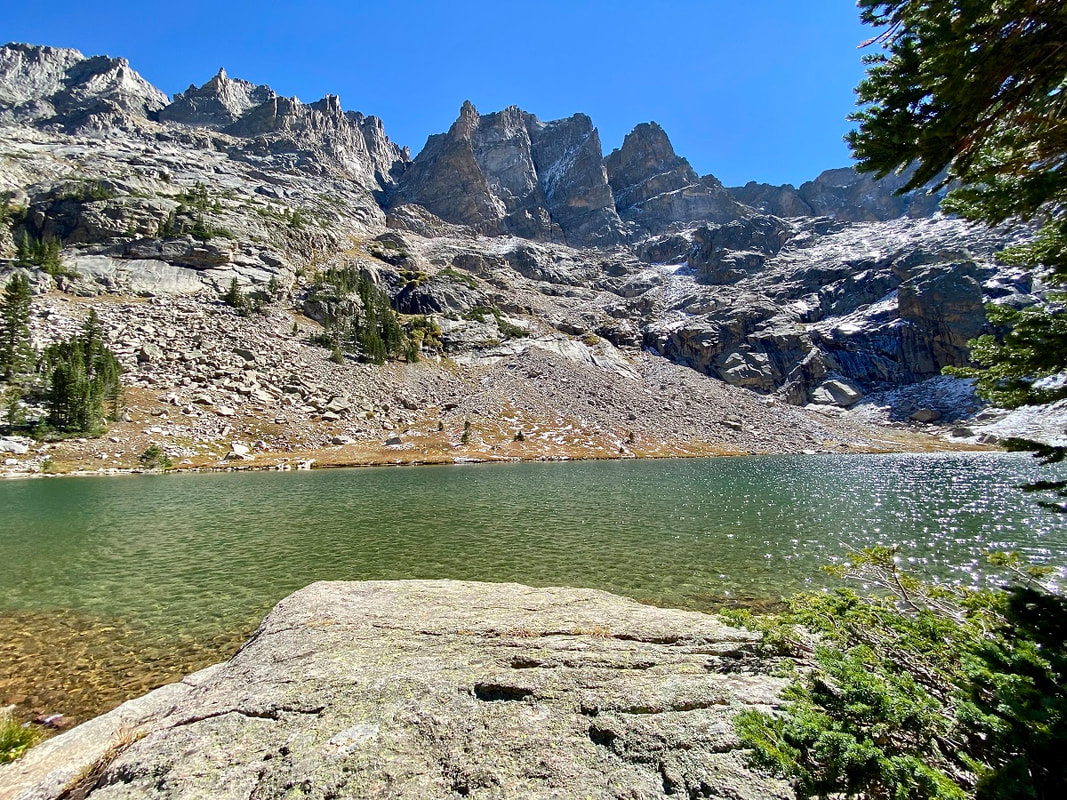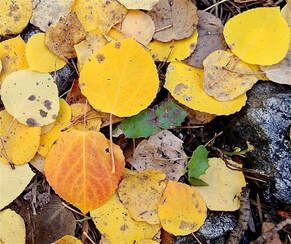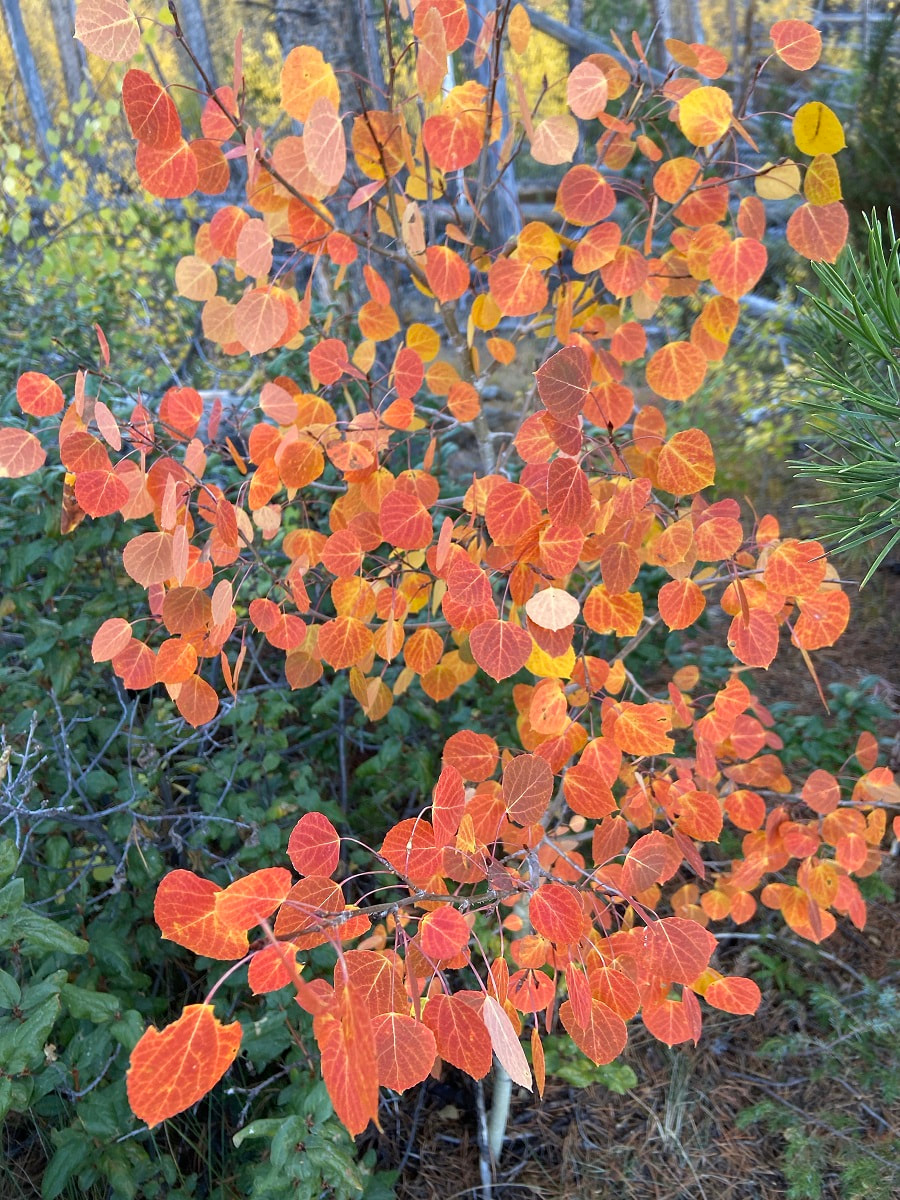|
Cover Story for the October 2021 edition of HIKE ROCKY magazine “I cannot endure to waste anything so precious as autumnal sunshine by staying in the house. There is no season when such pleasant and sunny spots may be lighted on, and produce so pleasant an effect on the feelings, as now, in October.” - Nathaniel Hawthorne, from The American Notebooks story and photos by Marlene Borneman Just as wildflowers blooming in summer bring us joy, autumn brings fresh pleasures. The most recognized natural fall spectacle in Colorado is the changing colors of aspen leaves. Quaking aspen, Populus tremuloides, is a hardy deciduous tree native to North America. The leaves are small heart-shaped with fine serrated teeth on the edges. The white bark is smooth which becomes rutted and uneven with age. Deciduous trees lose their leaves each winter. But it all begins in summer when there is an abundance of sunlight which aspens use along with water and carbon dioxide to produce oxygen and energy in the form of sugar. This process is known as photosynthesis. The green pigment chlorophyll is responsible for the absorption of light to help produce the energy (sugar) and hides the yellow, oranges, reds, that are true colors of the leaves. Many internal chemical changes occur in aspens during the fall. At the autumnal equinox and during the days following, there is less sunlight which results in leaves making less sugars, thus less chlorophyll is needed. The trees stop storing sugars and go into a dormant state for the winter months. When this process starts to happen, the pigments carotenoids and xanthophylls become visible bringing out yellow and orange colors. 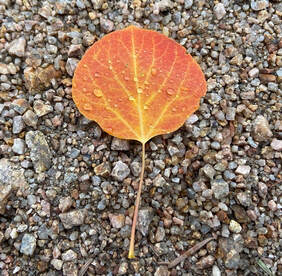 Detail of an aspen leaf in transition Detail of an aspen leaf in transition So, what about aspens that turn a brilliant red? Less sunlight also signals the aspen trees to form a blockage layer (called the abscission), preventing any sugars from passing between the leaf and the rest of the tree. During this process sugars may get trapped inside the leaf when the abscission layer is being formed producing the pigment anthocyanins. The higher the concentrations of anthocyanins, the deeper the crimson red hues. Each year aspen trees can produce a different set of colors depending on conditions in the environment during the formation of the abscission layer. Elevation, temperature, and moisture are variables that influence the timing of leaf change and intensity of color. The ideal circumstances for a brilliant display are sunny days and cool nights. 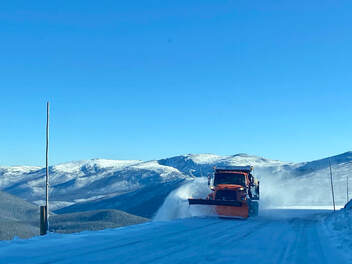 Snow plow operations in late September on Trail Ridge Road Snow plow operations in late September on Trail Ridge Road A great way to drench yourself in autumn gold is with a backpack trip to the west side of Rocky. My husband, Walt, and I planned a trip to Lake Verna the day before the autumnal equinox in hopes of catching some colors. The day before our trip, a fast-moving storm system deposited snow, closing Trail Ridge Road for a few hours. We checked the status of the road the morning of our drive to find it had re-opened. Rocky Mountain National Park is full of surprises so take seriously the posted signs that read “Be prepared for rapidly changing weather.” The road up high was snow covered and icy with seventeen degrees at the Alpine Visitor Center! After passing a snowplow, I thought to myself no winter boots, no gaiters, and no micro-spikes. And maybe, no backpack trip. Dropping down into the Kawuneeche Valley, we found a pleasant surprise: only a scattering of snow on the mountains and a balmy forty-eight degrees in Grand Lake. 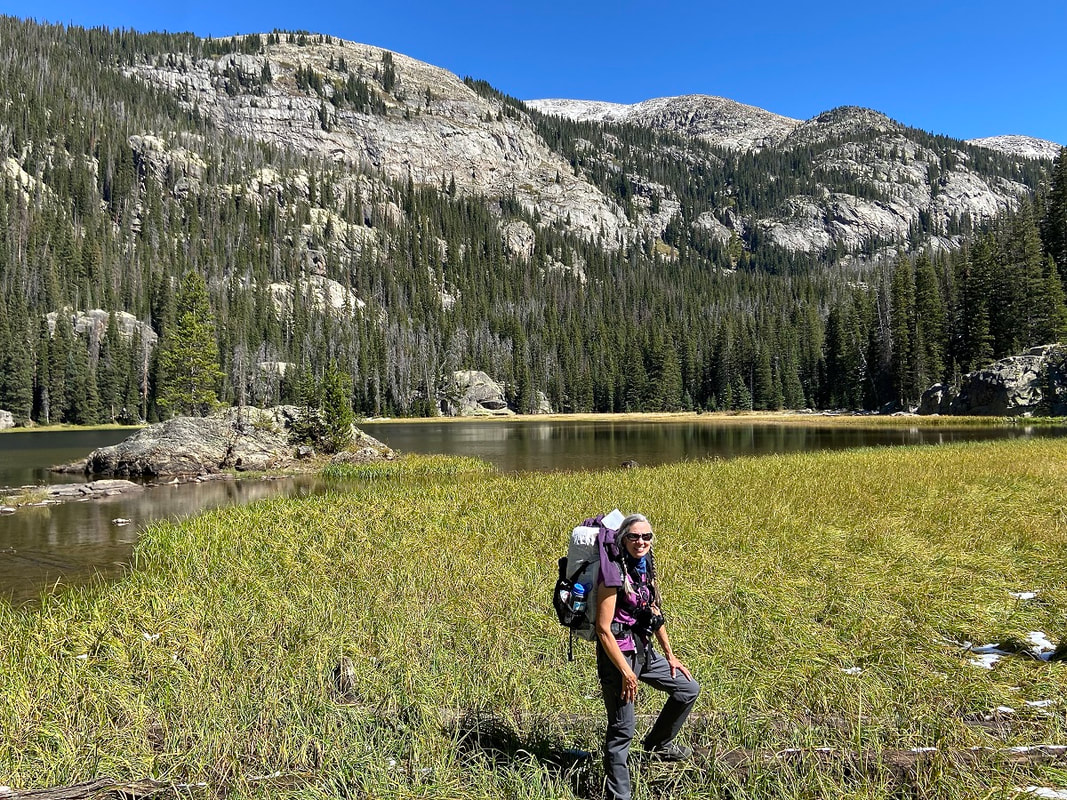 The author at Lone Pine Lake The author at Lone Pine Lake 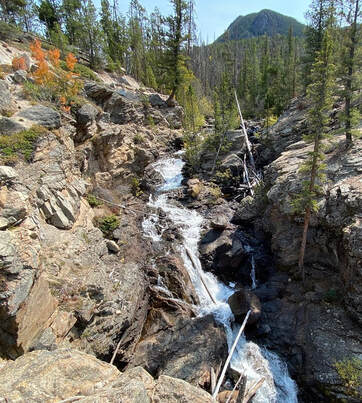 Adams Falls Adams Falls The trail to Lake Verna begins at East Inlet trailhead. The first hint of the stunning scenery on the East Inlet is Adams Falls, only 0.3 mile from the trailhead. From here, the trail rises moderately following the creek until reaching switchbacks. Then the trail becomes steeper as it leaves the creek. The East Inlet trail is a good example of trail crews' hard work with many rock steps, fine bridges and retaining walls for hiker's comfort, safety, and prevention of erosion. Soon we are immersed in deep golds, bright oranges, and reds of aspens. By the time we reach Lone Pine Lake it is a warm, sunny autumn day! At about 10,600 feet we see snow lingering in the trees with heartleaf arnicas still in bloom. Another surprise. Lake Verna is the largest along a chain of five lakes in the East Inlet drainage. The old-timers in Grand Lake used to call these the String Lakes; Lone Pine Lake, Lake Verna, Spirit Lake, Fourth Lake and Fifth Lake. There are eight backcountry camp sites along the East Inlet Trail. In past years we have snagged Lake Verna site but this time we are at Solitaire, 6.2 miles from the trailhead. After setting up camp we head for an evening tour of picturesque Lake Verna. Legend has it Lake Verna was named for the sweetheart of a member of the U.S. Geological Survey. The identity of the survey, surveyor and the sweetheart is unknown which makes for good storytelling around camp. The landscape seems so still and quiet as it slowly transitions from season to season.
All along this drainage many stately towers and pinnacles rise above the lakes making a dramatic scene. At 10,300 feet Spirit Lake glistens under the rock tower known as Aigiulle de Fleur which can render one speechless with its hefty but graceful presence. Fourth Lake is next on an unimproved trail with many huge down trees to negotiate over and under. Some of the down trees are the results of a derecho last September before the Troublesome fire raged through the park. Derecho is a type of windstorm with straight- line wind damage in a swath over a large area. The unimproved trail gets very faint after Fourth lake and almost non-existent to Fifth. Remote and striking Fifth Lake sits under the stately towers of Isolation Peak and along the ridge of The Cleaver. Marlene has been photographing Colorado's wildflowers while on her hiking and climbing adventures since 1979. Marlene has climbed Colorado's 54 14ers and the 126 USGS named peaks in Rocky. She is the author of Rocky Mountain Wildflowers 2Ed, The Best Front Range Wildflower Hikes, and Rocky Mountain Alpine Flowers. Snowy Peaks Winery in Estes Park is a supporter of HIKE ROCKY magazine and sponsors the publication of this story.
0 Comments
Leave a Reply. |
Categories
All
|
© Copyright 2025 Barefoot Publications, All Rights Reserved

